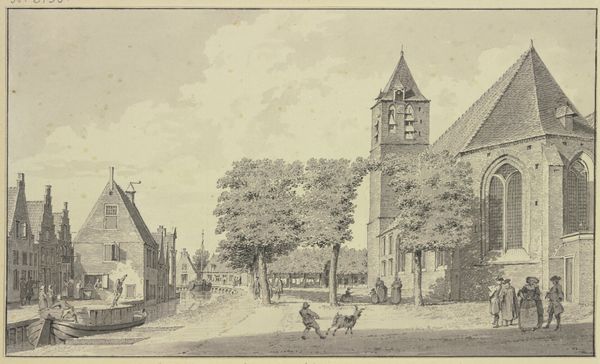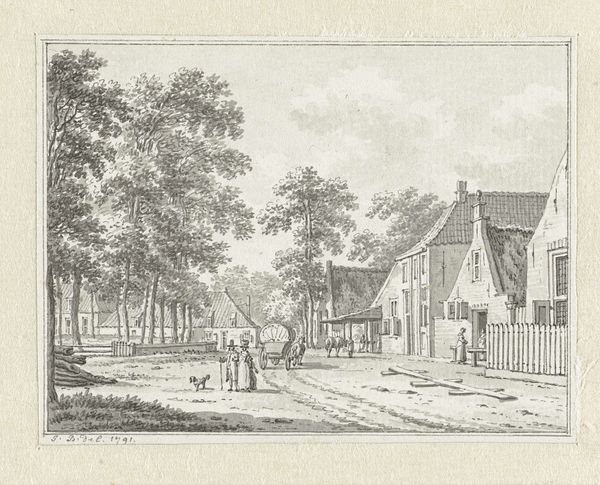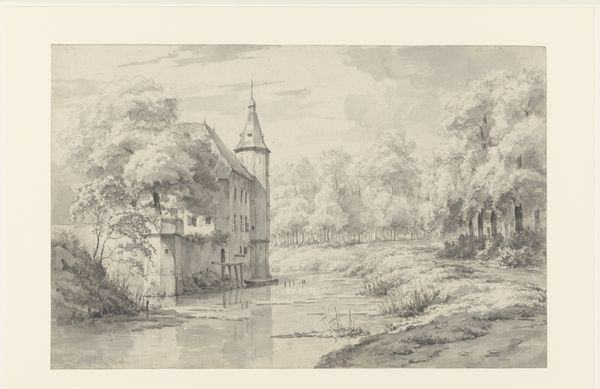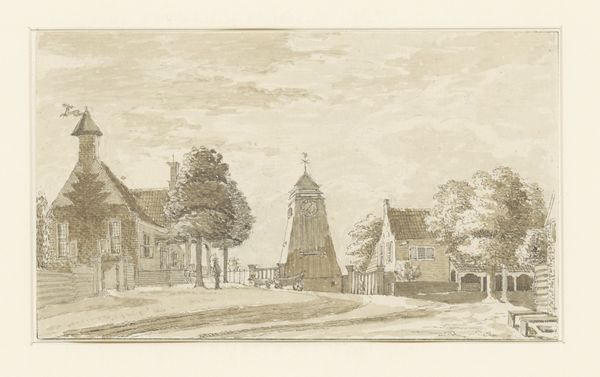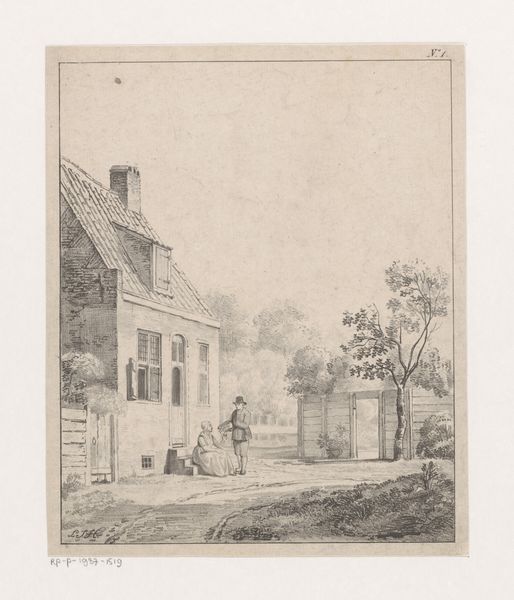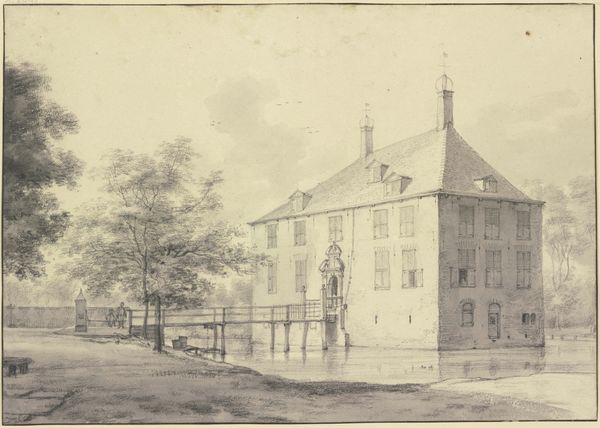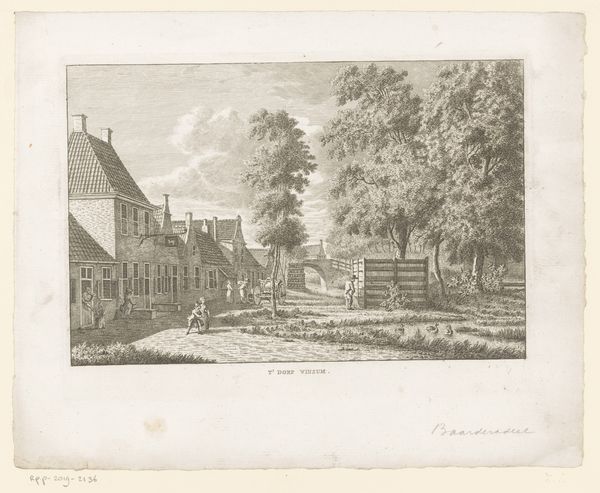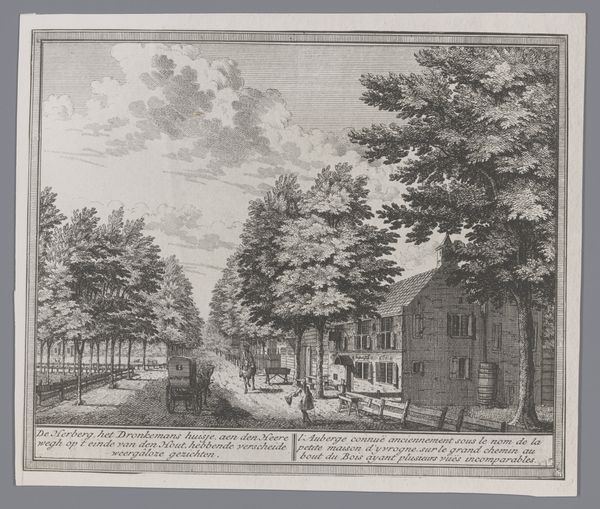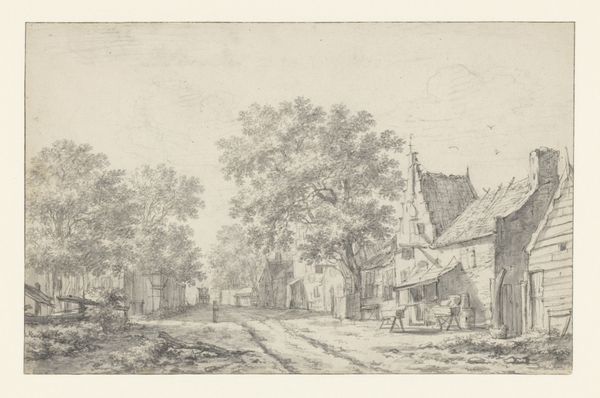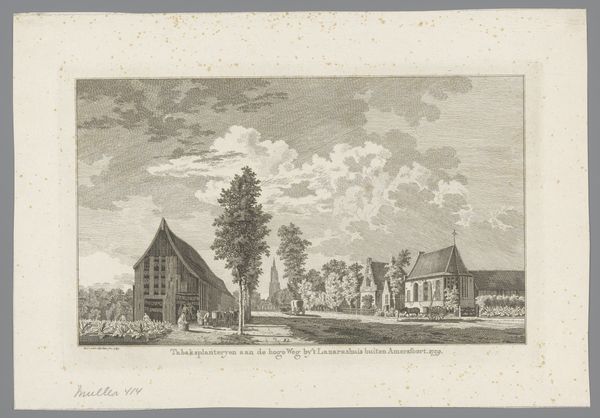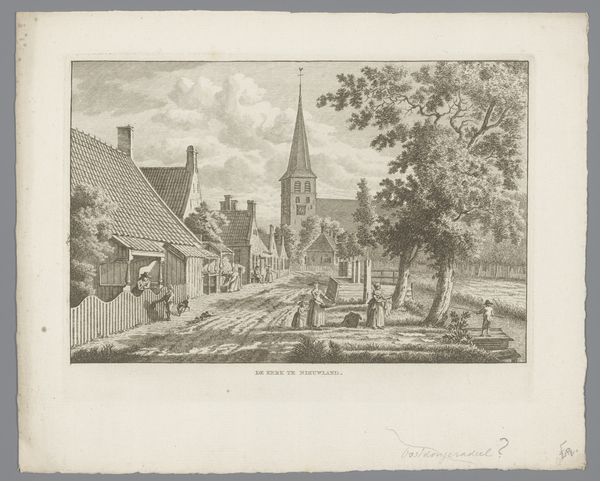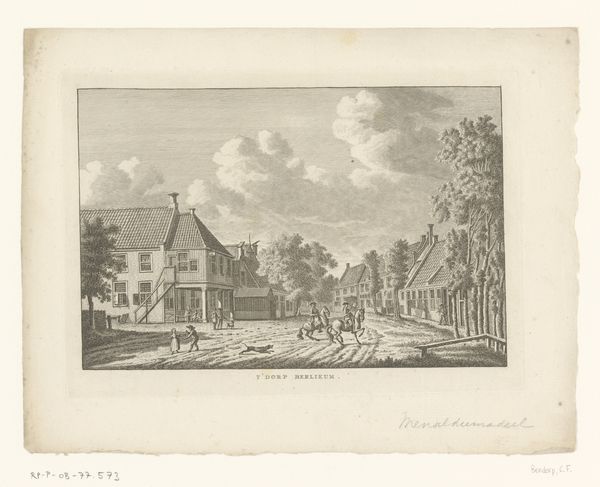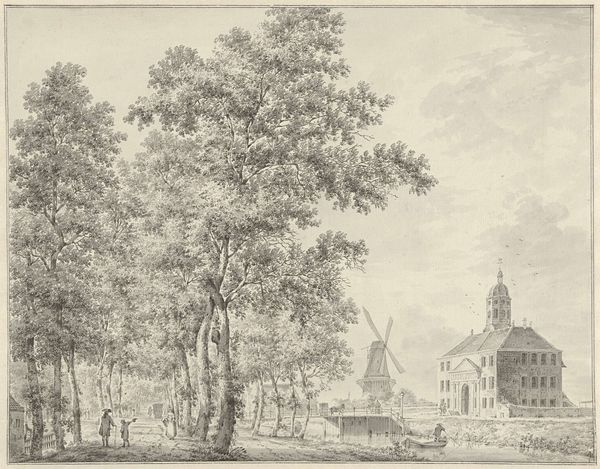
drawing, plein-air, ink, indian-ink, architecture
#
architectural sketch
#
drawing
#
netherlandish
#
dutch-golden-age
#
plein-air
#
landscape
#
ink
#
indian-ink
#
15_18th-century
#
architecture
Copyright: Public Domain
Curator: Welcome. We're looking at Cornelis Pronk's "Schloss Croy im Dorf Aarle-Rixtel," a drawing currently residing in the Städel Museum. It's rendered in ink, likely with Indian ink. Editor: My initial reaction is one of quietude. The soft greys, the meticulously rendered details—it all conveys a sense of serene, almost dreamlike stillness. The composition feels very carefully constructed. Curator: Pronk was Netherlandish, part of the Dutch Golden Age, and this architectural sketch really highlights his technical skill. It showcases buildings and their environment. Think about the materials used—paper and ink, relatively accessible even then. These choices speak to a deliberate intention of democratizing representation. Editor: Yes, I see that too. The prominent church spire speaks volumes about the spiritual weight the Church carried at the time, the heart of community life made permanent through art. Even the placement, deliberately set slightly back, makes the house seem almost on par with it, a symbolic relationship to spiritual order perhaps? Curator: Absolutely. Consider the labor involved—the detailed line work suggests plein-air sketching, implying direct observation of the materials on site. This reflects an early form of architectural record keeping, highlighting the value placed on accurate representation, on capturing tangible assets. Pronk, as the artist, serves also as recorder and translator, using a visual language for potentially varied patrons. Editor: And what about those figures on the bridge? Are they included as pure decoration, or as an indicator of human purpose and life flowing through this setting, perhaps signifying how man interacts with faith? I can't quite decode what I'm supposed to feel, if that's the goal. Curator: Both plausible interpretations. Pronk, in creating this image and focusing so meticulously on both the structures and the natural setting surrounding them, delivers to us a representation of life's setting and social infrastructure for discussion. His choices as an artist directly inform meaning here. Editor: That makes me think that Pronk's piece, therefore, provides an incredibly telling cultural artifact. The gentle hand and ink capture more than physical appearances; it embodies an almost sacred ambiance. Curator: Exactly. Pronk invites us to think of labor, material reality and the role art can play in both memorializing space, while giving glimpses into broader power structures, for consumption by particular viewers. Editor: I come away appreciating that sometimes what we create isn’t as powerful as what it silently reveals, that symbols can open hidden rooms inside us that perhaps an artisan from long ago intended to remain unlocked for this very moment.
Comments
No comments
Be the first to comment and join the conversation on the ultimate creative platform.

